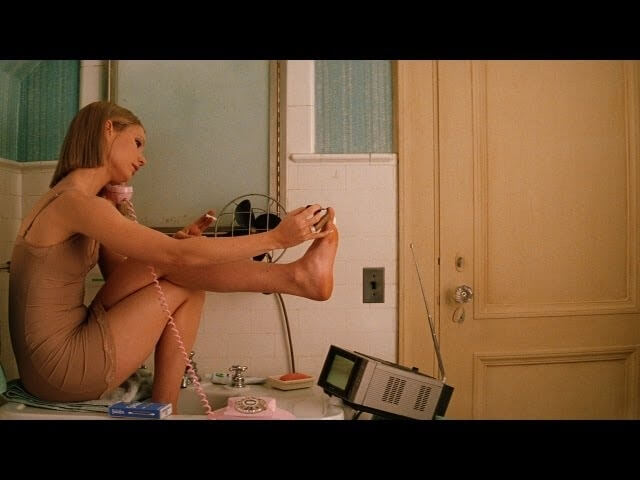The Tenenbaums and the Glasses wrap up our week of Family Feuds

For our Family Feud feature for Unconventional Families Week, every day The A.V. Club will select two families from a similar category. One of our writers will make the case for each side, and our fearless Editorial Director Josh Modell will make the call on the final victor. Whether you agree with Josh’s decision or not, be sure to add your vote to our online poll.
Well, we’ve almost reached the end of Unconventional Families Week, where we’ve had fun pitting similarly themed pop-culture families against each other in this series of Family Feuds. To wrap up, we take a break from the gruesomeness of yesterday’s cannibals to finish with a pair of pretentious clans much easier on the nervous system, but harder on the brain. J.D. Salinger’s Glass family—from Franny And Zooey and other Salinger stories about the New York City dwellers—even had a part in inspiring Wes Anderson’ The Royal Tenenbaums. But when it comes right down to it, which family members are so intellectually snobby that you’d do well to avoid them at fictional New York cocktail parties? Let’s play the last Feud to find out!
The Royal Tenenbaums (2001)
The question of the Tenenbaum clan’s pretension is more complex than it might seem. People often use “pretentious” as a synonym for “snobbish,” because most of the time, that shorthand works. Is it rather highfalutin for young Chas Tenenbaum to have a business workstation, complete with multiple phone lines, in his bedroom? Sure. Did the Tenenbaums’ upper-Manhattan neighbors roll their eyes when they received an invitation to another of little Margot’s living-room plays? I imagine they did.
But true pretension involves pretending—it needs the Tenenbaums to elevate themselves above their true station. And the thing about the Tenenbaum kids is that they’re not just putting on airs. They deliver the goods. Chas really is a business prodigy, and playwright Margot is truly talented, like her tennis star brother, Richie. And matriarch Etheline Tenenbaum is an accomplished archaeologist to boot. It’s true that the film’s main time period shows the grown kids in a slump, their collective genius having faltered, but they don’t pretend otherwise. Now, I realize I’m supposed to be arguing for Tenenbaum pretension. I have to be honest, though: For most of the family, I don’t see it. Elitism and eccentricities, yes. Pretension, no.
Fortunately for my case, there’s Royal, who’s enough of a puffed-up ass for the lot of them. He’s a supposedly respectable lawyer who is in fact so unethical that his own son manages to get him disbarred. He’s so vain and pampered that he continues to live at an upscale hotel, keeping up appearances, long beyond the time when he could afford such swanky digs. Even his gestures of fatherhood are mere pretense, meant to bolster a woe-is-me cancer story. Still, the film subtly suggests—and Royal’s loved ones come to appreciate—that the blustery image he projects isn’t entirely counterproductive. By acting like he belonged in society’s upper echelons, he lent the young Tenenbaum family enough swagger to make them think they belonged there, too, which they did. He faked it until they made it. It’s a legacy built on pretension, which makes Royal’s bullshit epitaph—“Died tragically rescuing his family from the wreckage of a destroyed sinking battleship”—a false yet fitting tribute. [John Teti]
J.D. Salinger’s Glass family (1948-65)
There are two major points of reference in The Royal Tenenbaums: Orson Welles’ The Magnificent Ambersons, which inspired the movie’s title and its use of voice-over, and the New York-based Glass family of J.D. Salinger’s best fiction, which inspired the Tenenbaums’ mix of giftedness, failure, and dysfunction. Of course, the thing about The Royal Tenenbaums is that it’s an elaborate pastiche, with parodies of everything from Oliver Sacks (as “Raleigh St. Clair”) to Cormac McCarthy’s prose (in Eli Cash’s Old Custer), and quotations that run from The Last Detail to From The Mixed-Up Files Of Mrs. Basil E. Frankweiler. But make no mistake: When it comes to the qualities that define the Tenenbaums as a family—even their not-quite-Jewishness—it’s the Glass clan all the way down.
The seven Glass children—Seymour, Franny, Zooey, Buddy, Boo Boo, and twins Walt and Waker—are precocious wunderkinds who grew into adults defined by emotional breakdowns and mystical experiences. None of them are as accomplished as Richie or Margot Tenenbaum (after all, what’s a pastiche without exaggeration?), which could be a strike against them, given that whatever potential the Glass children represent is largely speculative. At the same time, they also inhabit a more or less real world, unlike the Tenenbaums’ timeless fantasy Manhattan.
Perhaps it’s because the Glass stories are boxed in by real historical events (namely, the trauma of World War II) and by specific boundaries of time that the children’s personal struggles seem more pathetic; the reader is always aware of their smallness in the scheme of the real world. (Another contributing factor: The first published Glass story, “A Perfect Day For Bananafish,” concludes with a suicide, effectively beginning Salinger’s family cycle with a terminal end.)
That should make them the more relatable and human family, and yet nothing the Tenenbaums do—not even Margot’s plays—matches the pretension of “Hapworth 16, 1924,” Salinger’s final Glass story and the last work he put out in his lifetime. Taking up over 80 pages of the June 19, 1965 issue of The New Yorker, this never-republished novella is presented as a letter written by a 7-year old Seymour Glass from summer camp; occasionally fascinating, sometimes a slog, it’s somehow less plausible than Chas’ Dalmatian mice. [Ignatiy Vishnevetsky]
More pretentious: The answer, of course, is Gwyneth Paltrow. (Not Margot Tenenbaum, she’s great.) [Josh Modell]